Engineering alumni invest in UAF’s success
By Katie Straub
The University of Alaska was founded as the Alaska Agricultural College and School of Mines. And for nearly 100 years, the university has educated engineers on the campus that evolved into UAF.
The college began with seven faculty and six students in 1922. By the late 1930s, mining engineering dominated enrollment — 15 of the 35 graduates in 1941 earned a degree from the program.
The UAF College of Engineering and Mines now offers eight different undergraduate degrees, seven master’s degrees and an engineering Ph.D.
With over 500 students enrolled in CEM degree programs and more than 4,000 alumni with UAF engineering degrees, the industry’s legacy in Alaska was born in Fairbanks. It’s fitting that many of these engineers have invested their own dollars in the future success of the program.
Encouraging teaching excellence
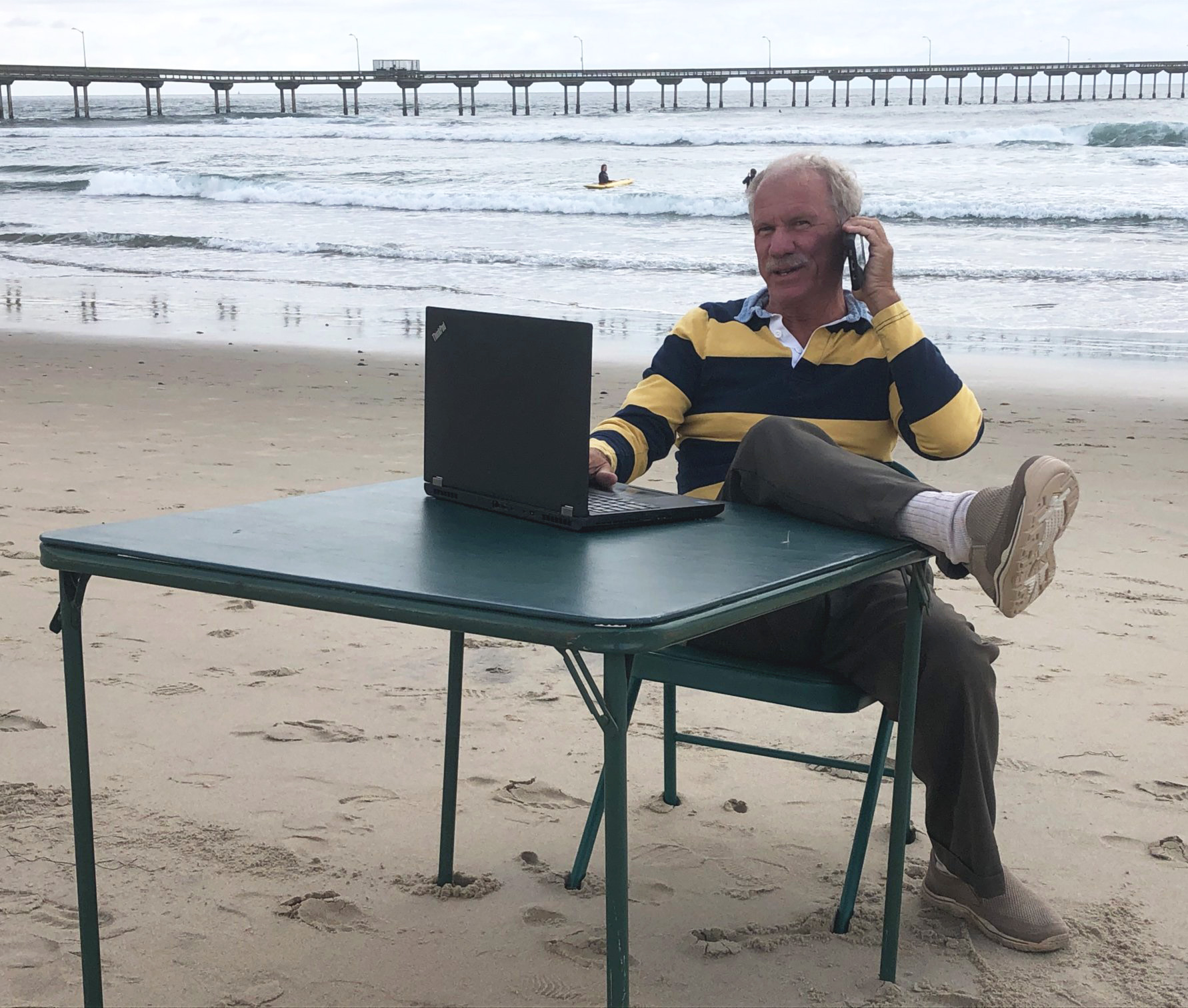
Jim Alves, at his San Diego “office," shows what working remotely should look like.
James (Jim) Alves ’77 chose to attend UAF because he grew up in Fairbanks and it was the only university he and his family could afford. That decision turned out to be an excellent choice — setting the trajectory for his future success.
As a high school standout in science and math, Alves enrolled in the electrical engineering program at UAF. After earning his bachelor’s degree magna cum laude, Alves secured a work-study fellowship at Hughes Aircraft Co. and the University of Southern California. He specialized in the field of artificial intelligence — specifically computer vision. His research launched a successful career developing technology for video imaging and electronic processing for advanced missile guidance, and later, for reading license plates at highway speeds on toll roads.
Looking back on his education and work experience, Alves realized that his innate passion for discovery blossomed at UAF, largely due to the high-caliber instruction at UAF. He appreciates having attended school in a smaller program where each student mattered.
“What I learned is that there are some pretty good teachers at the University of Alaska,” Alves said. “They are devoted to teaching. The majority of the professors were there because they wanted to teach the students. They wanted to prepare them. And I thought that was refreshing and better for students than what these gigantic big-name schools do in the Lower 48.”
To show his gratitude to UAF CEM, Alves established a planned gift within his estate that will benefit the engineering program. His support will encourage and foster teaching excellence in engineering and math programs and will benefit students studying electrical engineering and beyond.
“I wanted to provide some funding for good professors to keep getting better at what they do,” Alves said. “Quality and committed teaching is really the value that UAF provides, and this money will help maintain a focus on the high-value teaching of students.”
This year, Alves also sponsored a challenge during the second annual UA Giving Day, Nov. 9-10. He leveraged his gift so that electrical engineering students could tour the facility and radar systems at Clear Space Force Station in Anderson, Alaska.
Alves hopes this experience will help foster passion to keep learning in both students and professors.
“Passion makes things happen,” Alves said. “In my work experience, what truly separated one job candidate from another was how passionate they were about the work they were doing. I wanted to help foster that for the students and professors.”
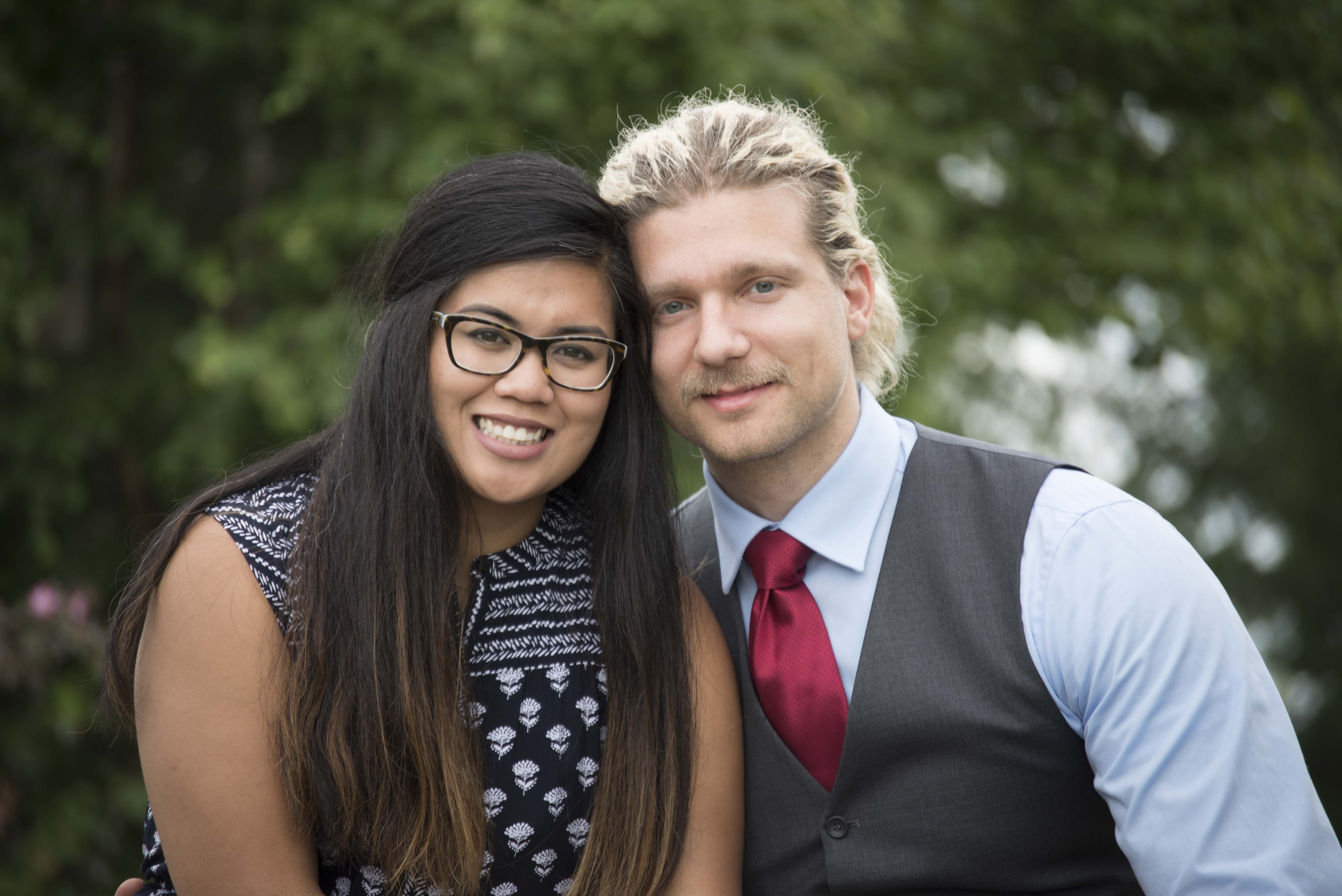
Sarah Villalon and Chase Rixie.
Nurturing aspiring students
Passionate teachers build strong academic programs. Great teachers, like the late Chase Rixie ’10, ’20, make a lasting impact on students.
After growing up in Salcha and earning a silver medal in cross-country skiing at the Arctic Winter Games, Rixie enrolled at UAF to earn his bachelor’s degree in electrical engineering. After receiving his master’s degree in electrical engineering from the University of Arizona, he returned to Fairbanks to complete another master’s degree, this one in business administration at UAF.
A professional engineer with Golden Valley Electric Association, Rixie taught at UAF as an adjunct instructor. He was passionate about nurturing aspiring engineers, and it brought him happiness to make an impact on the future.
Students loved him. They could tell he genuinely cared about them. They were thankful he took the time to explain the basics, breaking down content and encouraging them to think about the future with workplace and real-world engineering advice.
“He was the best professor I ever had,” wrote one student. “I learned so much from him — both in engineering and in life.”
When Rixie passed away in November 2020, his wife, Sarah Villalon, knew she wanted to honor him by creating a scholarship fund at UAF to cultivate curiosity in students.
“His passion went beyond instruction,” Villalon said. “[He] mentored students to thrive outside of the classroom and empowered them to be the next generation of leaders and innovators, and helped students find personal and professional success and happiness. We hope the endowment will keep Chase’s legacy alive and that even in the afterlife, he still is able to make an impact on future engineers and be a part of their successes.”
Completing a degree in engineering is no easy path. A scholarship award is sometimes exactly the support needed to keep students moving forward.
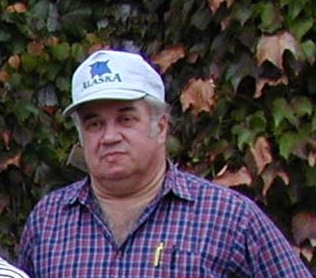
Richard Bush in 2000.
The Bush Family Engineering, Math and Science Scholarship was established in May 2021 to honor the late Richard (Dick) Bush, who graduated from the UAF mining engineering program in 1972.
Bush came to Fairbanks in 1959, along with his parents and siblings. He graduated from Monroe High School in 1964. He worked as a carpenter while attending UAF, where he was active in ROTC and an athlete on the rifle team, helping to win two national championships. He took additional graduate classes in civil engineering and engineering management.
In his work as a senior estimator, project engineer and supervisor, he contributed to infrastructure projects across Alaska. He took pride in his role in producing solidly built roads, schools and bridges throughout the state.
When Bush passed away in 2019, his family knew he would be pleased to give back to UAF engineering and math students through this scholarship.
Providing the right tools
In addition to providing scholarship support to students, CEM alumni have also given back by contributing significantly to modernizing equipment and technology.
The spacious and high-tech Engineering Learning and Innovation Facility was completed in 2017 with support from corporate donors such as ConocoPhillips, BP and Usibelli Coal Mine.
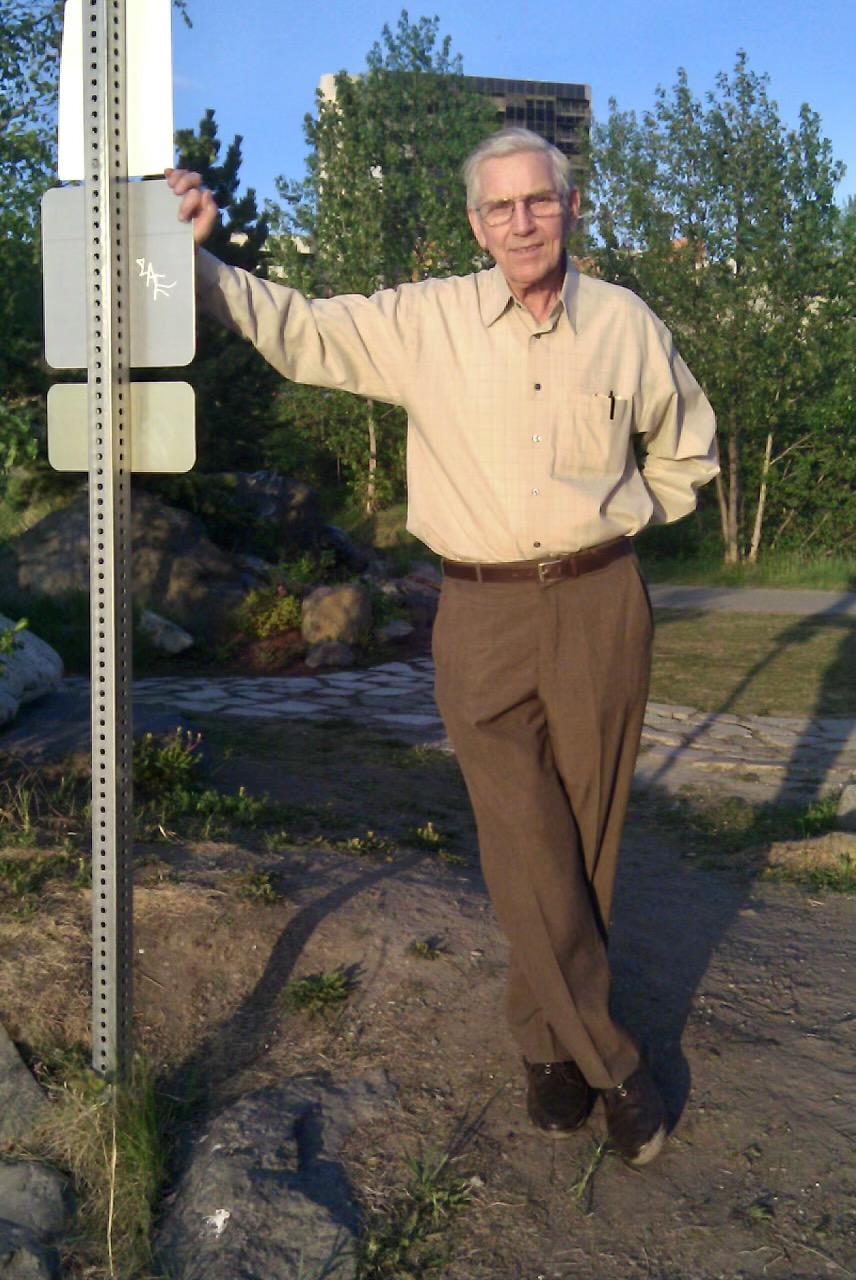
Richard (Dick) Nyman stands near the trail at Anchorage's Westchester Lagoon in May 2010.
Since then, private support from alumnus Alan Straub ’66 has been instrumental in maximizing the use of the space. The support has helped the steel bridge competition team train. It has also outfitted ELIF’s high bay with a heavy-duty load frame that can be used for various structural tests. The load frame will enable the UAF engineering program to increase its research capacity by securing competitive grants.
The late Richard (Dick) Nyman, a longtime Alaskan and well-known contractor on the North Slope, spent a short time studying mining at UAF in the 1950s. That experience left a lasting impression.
Nyman arrived in Fairbanks in 1952 and worked in construction across Alaska. He also worked as a commercial fisherman out of Bristol Bay, helped build ice roads across the North Slope and pulled “Cat trains” for the oil exploration company Western Geophysical. In 1981, he established Nyman Equipment Inc., which became a major contractor of heavy equipment supporting seismic oil exploration and development on the North Slope.
Despite working in a rough-and-tumble field, Nyman was known for his kindness, mild temperament and generosity.
The time Nyman spent at UAF was meaningful to him. In 2014 he established a named endowment to support the Institute of Northern Engineering, CEM’s research arm. INE has several distinct centers, providing facilities and support to dozens of researchers.
Nyman was interested in the idea of an innovation seed award to move INE-developed intellectual property to the private sector. He recognized the importance of moving research into companies, and he was happy that his money would go toward new technologies, creating wealth in the community.
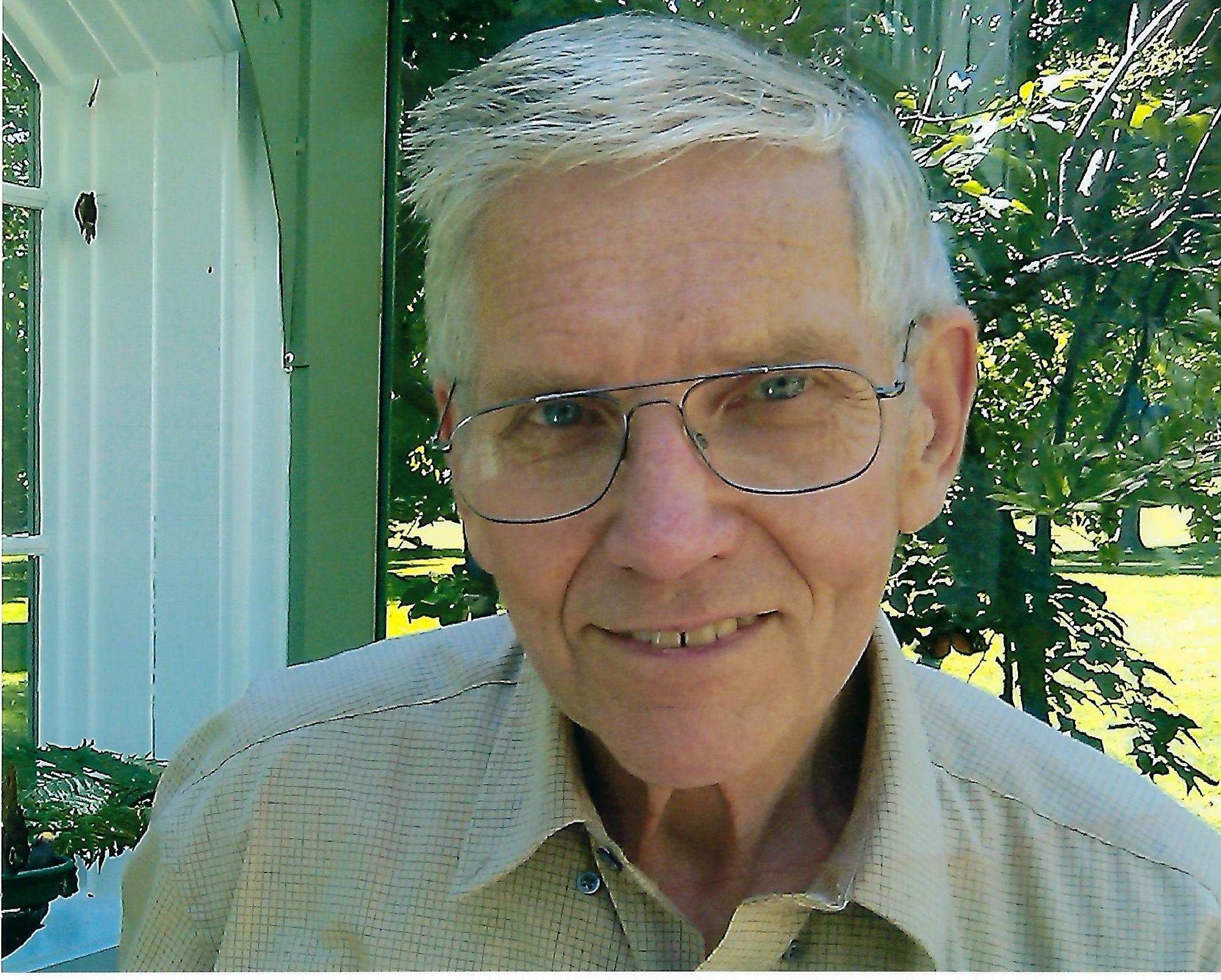
Richard Nyman visits the Grand Hotel at Michigan’s Mackinac Island in June 2011.
After Nyman passed away in 2019, UAF received another generous gift in 2020 with support from him and his wife, Jan Blanchard. This gift enabled CEM to purchase critical equipment and resources for research and discovery.
In the nearly 100 years of educating engineers within the UAF CEM program, there are many alumni like Alves, Nyman, Straub, Bush and Rixie whose experiences have inspired philanthropy.
When alumni express gratitude for their education and success by making philanthropic commitments to UAF, it energizes programs and helps the next generation of engineers succeed at UAF and beyond.
“Alumni giving inspires our students and faculty by linking the past to the present,” said Bill Schnabel, CEM dean. “Our students benefit from learning about the history of the engineering field from our alumni. There is so much more to engineering than numbers and equations. The personal connection and generosity displayed by alumni help our students understand that. It opens up a whole new element to our students' education and the importance of engineering to our community, state and society.”
“But I would also say it works the other way around,” added Schnabel. “Our alumni are often inspired to give because of our students — their innovation, hard work and the challenges they overcome to earn their degree.”
